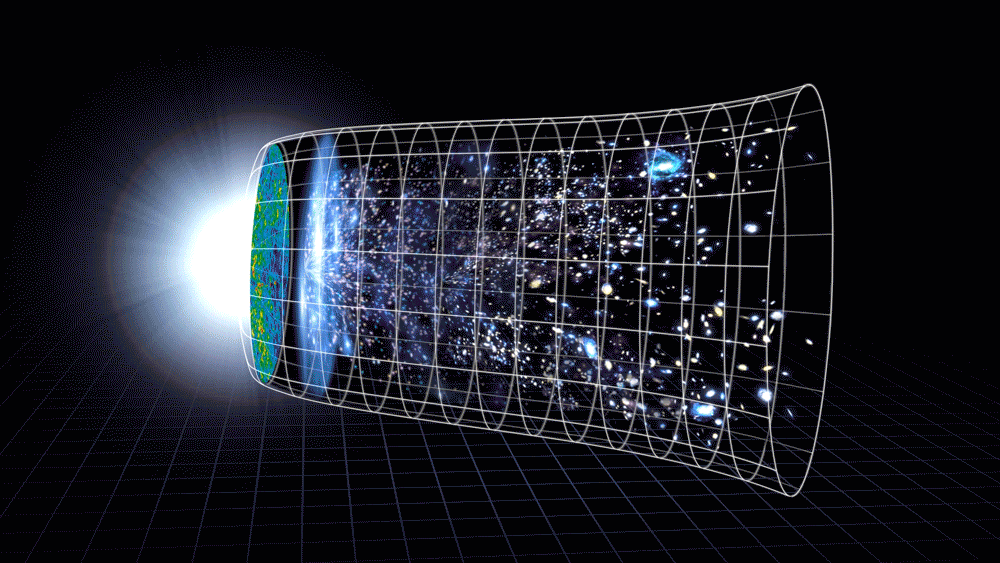telescope
This Comprehensive Guide Will Answer the Questions You Have About Black Holes—and Spark Some New Ones
In a new book release, two scientists combine forces to explain the discoveries, developments and theories made in the realm of the densest objects in space
The Six Most Amazing Discoveries We’ve Made by Exploring Uranus
Its bland exterior belies a dynamic world full of surprises
Seven Planets Will Gather in the Night Sky This Weekend. Here's What to Expect During the Rare Alignment
While such a lineup is uncommon, the event might not look exactly how you’re imagining it
A Record-Breaking 'Ghost Particle' From Outer Space Made a Splash of Light in the Mediterranean
The neutrino was 30 times more energetic than any other previously observed particle of its kind. Scientists still don’t know exactly where it came from
Astronomers Discover Extremely Rare Einstein Ring in Early Euclid Telescope Data, Revealing Warped Space-Time
Such examples of gravitational lensing can help astronomers learn more about the properties of dark matter
Astronomers Suspect Colliding Supermassive Black Holes Left the Universe Awash in Gravitational Waves
Radio telescopes tracking signals from spinning, ultra-dense stars point to ripples in the fabric of space
Check Out NASA's New Image of the Brilliant Bullseye Galaxy, the Aftermath of a Rare Cosmic Collision
After a blue dwarf galaxy shot through it like an arrow, the large Bullseye now has nine rings—six more than any other galaxy known to scientists
Check Out the Hubble Space Telescope's Stunning New View of the Andromeda Galaxy
The full image includes some 2.5 billion pixels compiled from observations spanning more than 1,000 orbits around Earth
Astronomers Found Strange, Accelerating X-Ray Pulses Coming From a Black Hole. They Might Be a Sign of an Orbiting White Dwarf
The dense stellar remnant would, if confirmed, be the closest known object to any black hole, according to preliminary research
James Webb Telescope Confirms the Universe Is Expanding Faster Than We Thought—and Scientists Still Don’t Know Why
The findings suggest that astronomers’ widely accepted cosmology models might be missing something—meaning the longstanding mystery known as the “Hubble tension” continues
Astronomers Detect the Smallest Main Belt Asteroids Ever Found by Repurposing a Technique for Exoplanet Discovery
An unusual approach to spotting tiny asteroids uses James Webb Space Telescope data in a boost for planetary defense research
See the Sombrero Galaxy Like Never Before, as the James Webb Telescope Captures It in Unprecedented Detail
The mid-infrared light image shows astronomical features that can’t be seen with visible light cameras or in previous infrared views—and in this shot, the galaxy doesn’t look much like a Sombrero anymore
Earth Bids Goodbye to Its 'Mini-Moon' as Astronomers Investigate Where Our Planet's Asteroid Companion Came From
Preliminary research suggests asteroid 2024 PT5, which stuck around Earth for almost two months, has lunar origins
Astronomers Spot a Galaxy Smashing Into Its Neighbors at 800 Times the Speed of a Fighter Jet
The collision in Stephan's Quintet was observed by WEAVE, a new instrument on one of the world's most powerful telescopes, in its first major scientific results
The Six Most Amazing Discoveries We’ve Made About Neptune
Despite the lack of a dedicated mission to the planet, scientists have learned plenty through ground observations and space telescopes
See the First Section of the Largest-Ever Cosmic Map, Revealed in Stunning Detail by the Euclid Space Telescope
The final 3D atlas of the sky will help scientists study dark matter and dark energy, which make up 96 percent of the universe but remain mysterious
Astronomers Are Watching for a Once-in-a-Lifetime Nova Explosion. When Will We See It?
A recurrent nova, known as the Blaze Star or T Coronae Borealis, is predicted to soon appear in the night sky. But the exact timing of the rare eruption remains unknown
Astronomers Discover a Small Exoplanet That's Our Cosmic Neighbor at Just Six Light-Years Away
Orbiting Barnard's star, the nearest solo star to Earth, the world is too hot to be habitable—a scorching 257 degrees Fahrenheit
Mysterious 'Wow!' Radio Signal Might Finally Have an Explanation—and No, It's Not Aliens
The infamous signal recorded in 1977 might have been a laser-like beam of radiation from a hydrogen cloud energized by a powerful, magnetic star, preliminary research suggests
NASA Retires Orbiting Telescope That Charted Asteroids for Over a Decade
NEOWISE, which looked for potentially hazardous objects in the solar system, received its last command on Thursday and will burn up when it re-enters Earth's atmosphere
Page 1 of 5
:focal(3987x2259:3988x2260)/https://tf-cmsv2-smithsonianmag-media.s3.amazonaws.com/filer_public/53/38/53385ad2-6907-4d00-a068-f7689882f139/gettyimages-1240620228.jpg)
:focal(800x602:801x603)/https://tf-cmsv2-smithsonianmag-media.s3.amazonaws.com/filer_public/f4/f9/f4f9d06d-0966-4fb8-be38-70437bd64d04/main_stsci-01evstta34sm681cb3t49545g4_web.jpg)
:focal(3306x1083:3307x1084)/https://tf-cmsv2-smithsonianmag-media.s3.amazonaws.com/filer_public/ae/80/ae80c929-5ced-4ba2-811f-00af05d3fc49/celebrating_matariki_-_maori_new_year_-_flickr_-_geoff_j_mckay.jpg)
:focal(2896x1944:2897x1945)/https://tf-cmsv2-smithsonianmag-media.s3.amazonaws.com/filer_public/c9/d2/c9d27869-330f-449c-ba26-d4e54e3f25c6/03_credit_n_busser_cnrs.jpg)
:focal(2332x2355:2333x2356)/https://tf-cmsv2-smithsonianmag-media.s3.amazonaws.com/filer_public/e0/99/e09987ea-e52f-4726-89c2-1edb09f96def/euclid_image_of_a_bright_einstein_ring_around_galaxy_ngc_6505.jpg)
:focal(453x341:454x342)/https://tf-cmsv2-smithsonianmag-media.s3.amazonaws.com/filer_public/e5/4b/e54b7362-5aee-46ec-a3cf-8fa18701d850/meerkat_radio_telescope_web.jpg)
:focal(1922x1812:1923x1813)/https://tf-cmsv2-smithsonianmag-media.s3.amazonaws.com/filer_public/74/4f/744f3fa5-a6bd-4987-b4eb-4c6dbb9ee3c9/bullseye_galaxy_next_to_blue_dwarf_galaxy.jpg)
:focal(650x384:651x385)/https://tf-cmsv2-smithsonianmag-media.s3.amazonaws.com/filer_public/cc/0f/cc0fe259-3759-4745-bb95-5d511ba8a9ec/screenshot_2025-01-22_at_24411_pm.png)
:focal(1085x1415:1086x1416)/https://tf-cmsv2-smithsonianmag-media.s3.amazonaws.com/filer_public/dd/67/dd6762de-4e45-46af-9767-631de55b1529/dwarfbh103024.jpg)

:focal(680x457:681x458)/https://tf-cmsv2-smithsonianmag-media.s3.amazonaws.com/filer_public/d4/21/d4212094-2293-45fe-860d-7d8876b3c07a/mit_smallest-asteroid-01-press-scaled-1360x0-c-default.jpg)
:focal(1000x333:1001x334)/https://tf-cmsv2-smithsonianmag-media.s3.amazonaws.com/filer_public/16/bc/16bcc751-d19b-485e-9507-8ca7fdf959dd/sombrero_galaxy.png)
:focal(1000x752:1001x753)/https://tf-cmsv2-smithsonianmag-media.s3.amazonaws.com/filer_public/c3/1c/c31c0631-f2fd-423f-967c-94b667eae2b7/gettyimages-460713851.jpg)
:focal(360x298:361x299)/https://tf-cmsv2-smithsonianmag-media.s3.amazonaws.com/filer_public/f4/ef/f4efda1b-afbd-4e8c-84bc-2870798b2d68/8579b35a-a502-4104-8bf4-2ed061dd2c71_1_201_a.jpeg)
:focal(800x602:801x603)/https://tf-cmsv2-smithsonianmag-media.s3.amazonaws.com/filer_public/9b/18/9b18984c-3b32-454b-805f-ea596a685f96/main_web_neptune_voyager2_color_calibrated.jpg)
:focal(960x549:961x550)/https://tf-cmsv2-smithsonianmag-media.s3.amazonaws.com/filer_public/f4/7b/f47b89c4-4f38-4570-bc12-e5c5ecb54455/euclid_captures_core_of_abell_3381_galaxy_cluster_pillars.jpg)
:focal(512x288:513x289)/https://tf-cmsv2-smithsonianmag-media.s3.amazonaws.com/filer_public/e2/8c/e28ce239-68d6-493b-9150-a2b36b7b7779/nova.webp)
:focal(628x244:629x245)/https://tf-cmsv2-smithsonianmag-media.s3.amazonaws.com/filer_public/e0/f9/e0f960b8-4fa1-495c-882e-11b8331c75c3/imagen-eso.jpg)
:focal(307x258:308x259)/https://tf-cmsv2-smithsonianmag-media.s3.amazonaws.com/filer_public/48/6e/486ede95-127a-4131-ac00-feacc81cff2b/wowcl.jpg)
:focal(385x220:386x221)/https://tf-cmsv2-smithsonianmag-media.s3.amazonaws.com/filer_public/ec/8a/ec8a9a7b-cf9a-455c-a3d9-24d09762caef/pia17254_modest.jpg)